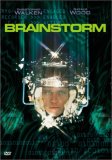|
Virtual Dictionary
Second Person VR Second Person VR is an old term, which describes the use of VR to portray an unrealistic image of a participant. Mostly depreciated, it is still valid when it comes to depicting users as supposedly inanimate or unrecognisable objects, still controlled by movement of a physical user body. Below, we offer a selection of links from our resource databases which may match this term.
Related Dictionary
Entries for Second Person VR:
Resources
in our database matching the Term Second Person VR:
Results by page [1] [2] [3] [4] [5] 
A creature from worldwide mythology, included for accurate content within the virtual. The Adh Sidhe hail from Ireland. They are spirit-folk of an uncertain appearance. Not so much shape shifters as perceived differently from person to person. With the slow decline of text-based VR, the skill of writing engrossing descriptions in third person speech, engaging and immersing the user, has been a skill slowly dying out. However, such descriptive, self-inclusive prose has its place, even in the most graphical of worlds. This article gives a few pointers on how. 
The life which most crave for is a life in which the form they wear is one of their choosing, one in which the visage they present matches the person inside. A life which feels as physically real as the one left behind, in which the person is more active, more vibrant, more alive than they might have been otherwise. An exotic stranger smiles at you. You approach with a coy ease, looking up and down at the gorgeous visuals this person is putting on, intrigued by the prospect of an intense interaction. You say hi, casually introduce yourself, maybe tell a joke, but there is a problem: This person does not speak your language. Designing round language problems in virtual worlds. 
 In the film, this is the first time we meet one of the cyborg women for what they really are - what they have become. Almost mindless, controlled robots. This repeats the message that any upgrade, or augment to the body and to the brain must always be consented to by the person receiving it, with full implications understood. If it is not, you risk turning a person into what is seen here: An appliance of convenience. In the film, this is the first time we meet one of the cyborg women for what they really are - what they have become. Almost mindless, controlled robots. This repeats the message that any upgrade, or augment to the body and to the brain must always be consented to by the person receiving it, with full implications understood. If it is not, you risk turning a person into what is seen here: An appliance of convenience.Stay is one of the songs by Shakespeare's Sister, a British band. It sings of one person?s desire to get out of the world, to find another, better world to inhabit. One of the singers is singing for the person to stay, the other is singing not for them to go, but that they will wake up ?in your own world?. This second half of the song is very powerful. 
 This shows what is essentially a full sensory immersion LAN. An eight person, totally self contained full-immersion VR machine. As shown, the interface method is direct neural biofeedback; the staple for the Matrix universe. Each of the person's brains are connected to the system via their brainstem, allowing full two way bodily sensory stimulus. However, there is no connection to the greater internet. This shows what is essentially a full sensory immersion LAN. An eight person, totally self contained full-immersion VR machine. As shown, the interface method is direct neural biofeedback; the staple for the Matrix universe. Each of the person's brains are connected to the system via their brainstem, allowing full two way bodily sensory stimulus. However, there is no connection to the greater internet.
Brainstorm is essentially a film along the lines of SimStim, or Simulated Stimulation. It came along in 1983, long before virtual reality was a mainstream concept for the first time. It is nowhere near the level of colourful fluff that covers blockbuster VR films like ?the Matrix?, but, at the same time it more than holds its own. Brainstorm doesn?t deal with virtual reality par se, but rather with a similar technology, that of SimStim. It doesn?t refer to it as SimStim, which was coined in the earlier William Gibson novel ?Neuromancer?, but that is exactly what it is. Using a sensory jack to record one person?s senses and emotions, then playing them back to another person, as a wholesale experience. One person?s take on creating an inventory system that emulates reality.
Industry
News containing the Term Second Person VR:
Results by page (18/04/2009)
The Chameleon Project, a collaboration between artist Tina Gonsalves - currently in residence at the MIT Media Lab - and neuroscientists involves using face recognition software that analyses a person's expression as they walk into a room...
(04/06/2008)
Microsoft researchers have developed a way to automatically guess a person's mode of transport from their GPS trace alone. Analysis showed that knowing a person's speed is not enough to predict their mode of transport. Unpr...
(31/03/2009)
Japan's Honda said Tuesday it had developed a robot steered by human thought, thanks to a helmet-like device that measures a person's brain activity and sends signals to the machine. The latest version of ASIMO -- the celeb...
(27/09/2006)
Forensic imaging specialist Chris Solomon at Kent University in the UK has created software that artificially "ages" a person's face using their personal history, family traits and population trends. Agencies involved in t...
(19/05/2009)
Studying the way a person's brain 'sings' could improve our understanding of conditions such as epilepsy and schizophrenia and help develop better treatments, scientists at Cardiff University have discovered. Research by a...
|
|
||||||||||||||||||||||||||||||||||||||||||||||



